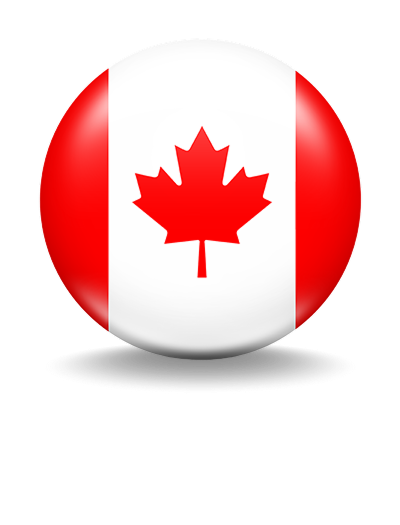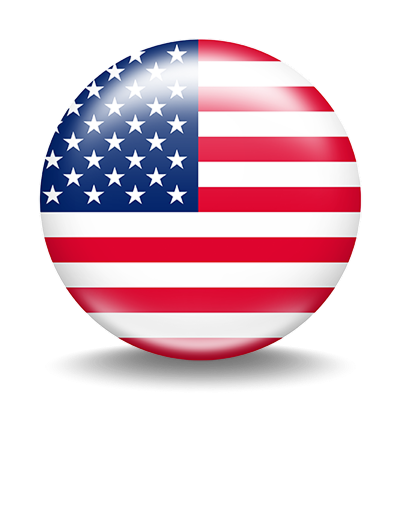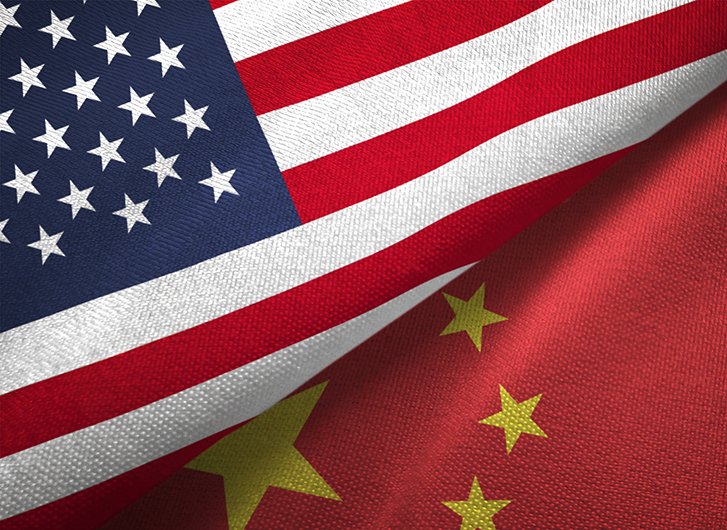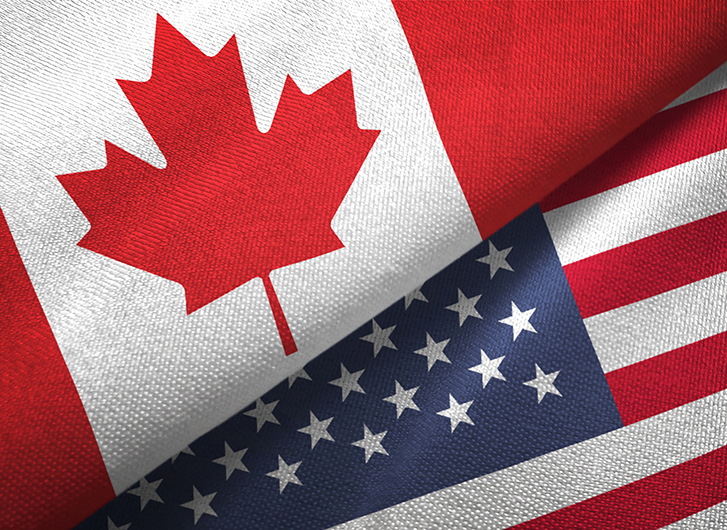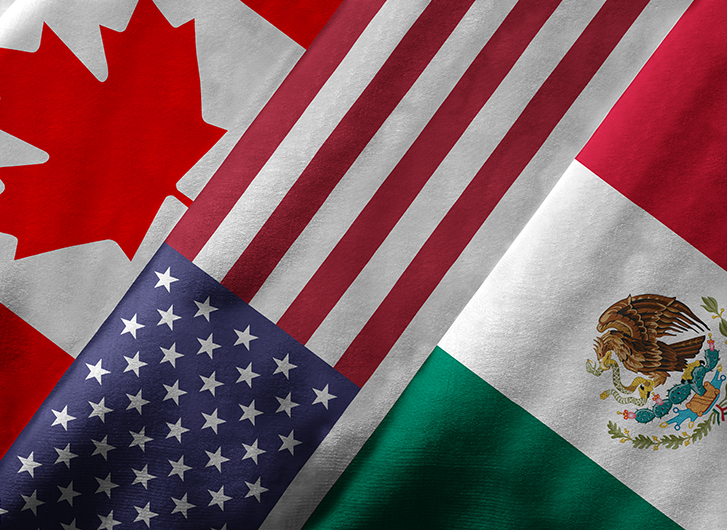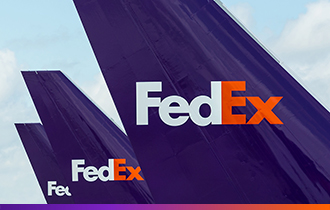
Navigate U.S. tariff changes with ease
What’s new on this page?
The basics
Navigating the evolving landscape of U.S. import tariffs can be challenging, especially for small and medium-sized businesses. At FedEx, your success is our priority.
We’re committed to helping you stay informed and adapt to recent tariff changes. Our experienced team of experts in clearance and compliance work around the clock to help ensure your shipments continue moving across borders in more than 220 countries and territories.
Customs tariffs are duties applied to goods at the time of importation. These duties are typically calculated as a percentage of the goods' value and depend on three key factors:
- The customs classification of the goods
- The declared value of the goods
- The country of origin of the goods
What it means for your business
Higher Duty Costs
Recent changes may mean higher duties, depending on the type of goods and the country of origin.
Additional clearance requirements
New declaration requirements may apply to your shipments, and the process may differ from what you’ve done in the past. FedEx Electronic Trade Documents simplifies the submission of required customs paperwork — helping you stay compliant.
Customer expectations
Be transparent with your customers about who is responsible for paying duty, tax, and fees (Incoterms) and include these key details on your Commercial Invoice to avoid delays and surprises.
The Harmonized System (HS)
Most trading nations, including Canada and the United States (U.S.), use the Harmonized System (HS) to classify goods and determine applicable tariff rates.
In Canada
The HS is outlined in Canada's Customs Tariff Schedule, which organizes goods into 99 chapters. The Customs Tariff specifies the following duty rate categories:
- Most Favoured Nation (MFN) Rates: Applicable to goods from World Trade Organization (WTO) member countries.
- Preferential Rates: Applicable to goods from countries with which Canada has free trade agreements, such as the Canada-United States-Mexico Agreement (CUSMA).
In the U.S.
The HS is set out in the Harmonized Tariff Schedule of the United States (HTSUS), which also contains 99 chapters and explanatory notes to clarify how tariff rules are applied. The HTSUS assigns each good one of three categories of duty rates:
- Most Favoured Nation (MFN) Rates: Applicable to WTO member countries with normal trading relations with the U.S.
- Preferential Rates: Applicable to goods from countries with which the U.S. has free trade agreements, such as Canada under the United States-Mexico-Canada Agreement (USMCA).
- General Rates: Applicable to countries without normal trading relationships with the U.S.
What you need to know: Key updates
While understanding the basics of tariffs is essential, it’s equally important to stay up-to-date on recent changes that could impact your shipments.
U.S. and China reach agreement to temporarily reduce certain tariffs
Last Updated: May 14, 2025
Canada: Implementation of the United States Surtax Order for goods originating from the U.S.
Last Updated: April 17, 2025
U.S.: Elimination of de minimis treatment for imports
Last Updated: August 1, 2025
U.S.: Updated guidance on U.S. aluminum import tariffs
Last Updated: March 13, 2025
U.S.: Updated guidance on U.S. aluminum import tariffs
Last Updated: March 13, 2025
Explore tariff calculation resources
Check out these tools that can help you quickly find updated tariff information for specific products.
FedEx International Shipping Assist
Submit your shipment details, and we'll provide your Harmonized System Code, estimated duties and taxes, and blank copies of your customs export documentation.
Canada Tariff Finder
Use the Government of Canada’s tariff finder to get rates for specific products and countries where Canada has Free Trade Agreements.
U.S. tariffs – frequently asked questions
A tariff is a tax or customs duty imposed by a government on goods imported (or sometimes exported from) a country. It is calculated as a percentage of the product’s value and is used to regulate trade, protect domestic industries, or generate revenue.
For example, if you're importing $500 worth of shoes from Italy and the tariff rate is 8.5%, you would pay $42.50 in tariffs as part of the import process.
The tariff responsibilities are typically agreed upon between a shipper and recipient. Tariffs can be paid by:
- The shipper (the person sending the goods)
- The recipient (the person receiving the goods)
- A third party, such as a freight forwarder
Effective at 12:01am (EDT) on August 29, 2025, the de minimis exemption for international shipments to the U.S. valued at US$800 or less is suspended. This means that exports at or below that amount require full customs documentation, and that duty, taxes, and/or fees may apply.
Many countries use the same global system, called the Harmonized System (HS), to classify products for tariffs. Here’s how it works in Canada and the U.S.:
In Canada:
Canada uses the Customs Tariff Schedule, which includes 99 chapters. Tariffs are assigned based on the trading relationship:
- Most Favoured Nation (MFN) Rates: Standard rates for most trading partners.
- Preferential Tariff Rates: Lower rates, generally for countries with trade agreements.
In the U.S.:
The Harmonized Tariff Schedule of the United States (HTSUS) is used, also containing 99 chapters. Products are assigned one of three duty categories:
- Most Favoured Nation (MFN) Rates: Standard rates for countries with normal trading relations (usually World Trade Organization members)
- Preferential Rates: Lower rates, generally for goods from countries with free trade agreements, such as Canada under the United States-Mexico-Canada Agreement (USMCA).
- General Rates: Standard rates for countries without normal trading relationships with the U.S.
The first six digits of an HS code are globally standardized under the Harmonized System, developed by the World Customs Organization (WCO), ensuring consistent classification across countries. However, individual countries and territories often add additional digits to meet their own regulatory, statistical, or tariff requirements.
Examples of country-specific extensions include:
- United States: 10-digit Harmonized Tariff Schedule of the United States (HTSUS or HTS)
- ASEAN countries: 6- and 8-digit ASEAN Harmonized Tariff Nomenclature (AHTN)
- Australia: 8-digit Australian Harmonized Export Commodity Classification (AHECC)
- Hong Kong: 8-digit Hong Kong Harmonized System (HKHS)
A customs broker is a licensed professional or company that helps you follow import rules when shipping goods to the U.S. and internationally. They can assist with:
- Determining the correct HTS code to classify imported goods (used to determine tariffs)
- Preparing and submitting required documents
- Calculating and paying duties, taxes, and fees
- Ensure compliance with U.S. Customs and Border Protection (CBP) policies to avoid non-compliance
You can use any licensed customs broker for international shipments. FedEx can act as your customs broker, or we can work with one you choose through FedEx International Broker Select®. Choosing a knowledgeable broker can help prevent delays, penalties, and incorrect tariff classifications.
Yes. Incorrect tariff classification, undervaluing goods, or failing to follow customs regulations can result in serious consequences, including:
- Fines or penalties issued by U.S. Customs and Border Protection (CBP)
- Shipment delays or holds
- Audits or investigations
- Back payment of duties and taxes, sometimes with interest
To avoid issues, ensure accurate HTS code classification, maintain thorough documentation, and consider working with a licensed customs broker.
If you see a Special Assessment Fee on your FedEx invoice, it means the product you imported into Canada is subject to additional government charges. These may include:
Anti-dumping and countervailing duties
FedEx consolidates these charges into a single line item labelled Special Assessment Fee on your invoice.
Note: This applies only to certain Canadian imports and is charged in addition to standard Canadian duties and taxes.
Learn more about duties and taxes for Canadian imports.

